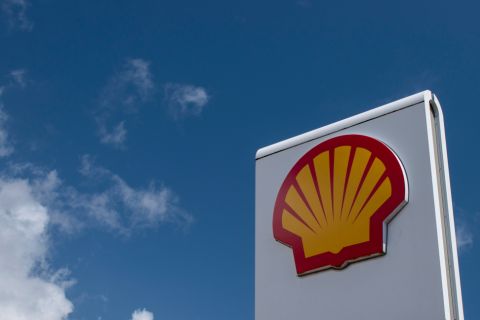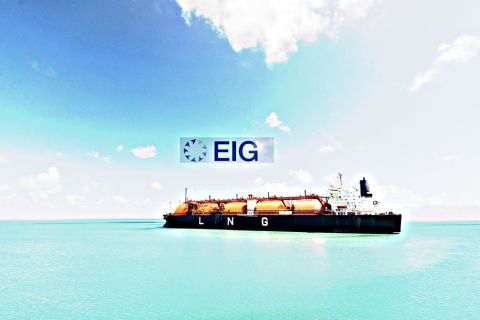Oil prices have slipped some 60% since June 2014 and have ranged from more than $100 to less than $45 per barrel in recent months, according to the U.S. Energy Information Administration (EIA). Similar trends are playing out in the natural gas market.
This has left many investors scratching their heads, wondering what their assets are now worth and whether or not the domestic energy sector will ever bounce back to previous levels.
As a result of these fluctuations, however, the energy market is now ripe for M&A activity, as once-valuable oil and gas assets are now becoming available to savvy investors at steep discounts.
Thanks to persistent and volatile pricing trends, the market is now effectively on sale and smart investors stand to reap the benefits, as consolidation and reinvestment are set to sweep many of the smaller, less-well-capitalized players out of the market over the coming months.
But, at the same time, energy market M&A is becoming more complex, as today’s oil and gas asset valuations now need to extend beyond simply the value of the reservoir itself to include the surface facilities, transport systems and other equipment at the site.
Valuing the infrastructure
Why? Because as production volumes have increased in recent years, as a result of directional drilling techniques and other more advanced extraction methods, the surface facilities required to gather, pre-process and process oil and gas at these sites have grown more complex as well. That translates to more expensive, more valuable facilities than what was previously in use for oil and gas extraction and processing in this country.
Case in point: Where in the past a more traditional well site might have supported a single wellhead with limited compression and processing facilities and a handful of on-site storage tanks or transport systems, today’s multiwell systems take those equipment needs and multiply them exponentially.
It is not unusual today to find oil and gas well sites with 20, 30 or even 40 active wellheads, with enough facility support to serve them all simultaneously. That means multiple compression stations, multi-well centralized processing systems, a multitude of piping sections and connectors and a management system to make sense of it all. This is valuable equipment and a key part of the long-term success of the wellheads that cannot be overlooked when valuing the site.
The bigger picture
As a result, surface facilities valuation is becoming an important part of the oil and gas M&A process and—as the market for energy products gets tighter—will likely become a key concern that neither buyers nor sellers can overlook in the future. Not only are these midstream facilities increasingly expensive to install and maintain, but they are crucially important when considering operational efficiency in today’s lower margin environment.
Fully understanding the health and condition of the underlying asset infrastructure, everything from the wellhead to the midstream facilities, helps potential buyers understand if there may be any challenges in gathering and processing quality product and/or getting those products to market once the deal goes through.
Simply put: This is information that buyers cannot afford to overlook, and sellers cannot afford to not understand themselves before putting their assets on the market.
In oil and gas M&A, it isn’t just about the reservoir anymore. Now, the question that buyers have to ask is, “Do you have the pieces in place to maximize the value of that asset once you own it?”
Facilities valuation is a key step in this direction.
An engineered solution
But how can investors make sure the assets they are considering have answers to these questions? How can they ensure that not only is a given site performing up to its advertised standard, but that it will be able to do so efficiently for some time to come without additional hidden costs?
It all comes down to the details. In addition to reservoir validation, buyers and sellers need access to both qualitative and quantitative facilities information about the site in question in order to fully understand the current and potential asset capability before the deal goes forward.
Fortunately, this is work that oil and gas engineers do every day as part of their site optimization and development efforts. Gathering and analyzing information is just part of the process, as are categorizing site elements and assessing installation standards to ensure optimal performance for the installation as a whole.
For the M&A deal valuation process, this can be incredibly valuable information. Not only can it provide a top-down look at the potential acquisition site, but it can also offer granular insights into the workings and value of the site’s midstream facilities overall.
This can be broken down into five key information-gathering steps that all oil and gas investors should consider as part of their own valuation processes.
Cataloging and valuing hard assets—An itemized catalog of all the hard materials used in a given site’s production and management systems should be recorded and a fair market valuation assigned to each. This effort provides a current, fair market estimate of value of the physical plant to be considered during sales and purchase negotiations.
Documenting and re-drafting of field assets—By reproducing a field asset’s entire engineering and construction documentation package, parties can have direct access to the site’s process flow diagrams, process and instrumentation diagrams, electrical and instrumentation/controls diagrams, as well as any 3-D models, bills of materials, datasheets, plot plans and more.
This provides a high-level overview of the site in question as it was built and how it was designed to function.
Process optimization modeling and planning—What opportunities are available for optimization or facilities improvement at a particular site? Buyers should consider process redundancies, gaps, over- and under- engineering of facilities, as well as identification of additional product and revenue streams when validating oil and gas facilities. With these models, buyers and sellers can look strategically at the potential of an asset to maximize sales price or returns on investment.
Regulatory assessment—In this environmentally conscious time, it is crucial that both buyers and sellers assess an asset’s level of regulatory compliance and fully understand what costs might be required to bring the asset up to date, if necessary.
Safety analysis—Likewise, can the asset be operated safely in its current state or will it require significant investment to bring it up to modern standards? Certified Process Safety Management inspection services can assess an asset’s Occupational Safety and Health Association compliance as well as any other industry standards the site should follow (American Petroleum Institute, American Society of Mechanical Engineers, Edison Electric Institute, etc.). With this data, a safety optimization plan can be drawn up to maximize site safety.
All three phases
Facilities valuation can do more than just help potential buyers in M&A transactions, however. Sellers too can benefit from access to this kind of site-specific information. Consider the potential impacts and advantages of facilities valuation data across the entire transaction:
Presale—By following the above steps, sellers can accurately catalog and map their hard assets as well as identify opportunities to optimize gathering and processing systems to maximize production, minimize inefficiencies and prolong asset reliability—all of which can add to the asking price of the asset.
Prepurchase—On the buy side of an M&A transaction, proper facilities valuation can help active buyers accurately locate and catalog a desired asset and assess the current operating costs and inefficiencies of the buildout. This can not only help with price negotiations at the time of sale, but also help the new owners with future site planning and upgrade efforts.
Post sale—Lastly, once an asset has been purchased, access to this detailed information makes it easier for the buyer to catalog and integrate asset components into its existing portfolio, as well as provide opportunities for asset optimization going forward to maximize its return on investment.
In summary, given the significant investments being made in state-of- the-art multiwell oil and gas site developments, as well as upstream and midstream processing operations, the cost of the engineered facilities included as part of an asset purchase or sale must now be closely considered for a proper valuation of the asset overall. To overlook these systems is to both severely undervalue the site as well as overlook a potential source of future site optimization and improvement opportunities.
Of course, the value of the reservoir is still crucial in all oil and gas asset deals. But in today’s fluctuating energy market, midstream facilities are now more than ever a key part of the M&A valuation process that cannot be ignored.
Matt Halker is a registered professional engineer in the state of Colorado and founder of Halker Consulting.
Recommended Reading
Shell’s CEO Sawan Says Confidence in US LNG is Slipping
2024-02-05 - Issues related to Venture Global LNG’s contract commitments and U.S. President Joe Biden’s recent decision to pause approvals of new U.S. liquefaction plants have raised questions about the reliability of the American LNG sector, according to Shell CEO Wael Sawan.
BP Pursues ‘25-by-‘25’ Target to Amp Up LNG Production
2024-02-15 - BP wants to boost its LNG portfolio to 25 mtpa by 2025 under a plan dubbed “25-by-25,” upping its portfolio by 9% compared to 2023, CEO Murray Auchincloss said during the company’s webcast with analysts.
Mitsubishi Makes Investment in MidOcean Energy LNG
2024-04-02 - MidOcean said Mitsubishi’s investment will help push a competitive long-term LNG growth platform for the company.
Mexico Pacific Appoints New CEO Bairstow
2024-04-15 - Sarah Bairstow joined Mexico Pacific Ltd. in 2019 and is assuming the CEO role following Ivan Van der Walt’s resignation.
Nebula Energy Buys Majority Stake in AG&P LNG
2024-01-31 - AG&P will now operate as an independent subsidiary of Nebula Energy with key offices in UAE, Singapore, India, Vietnam and Indonesia.





